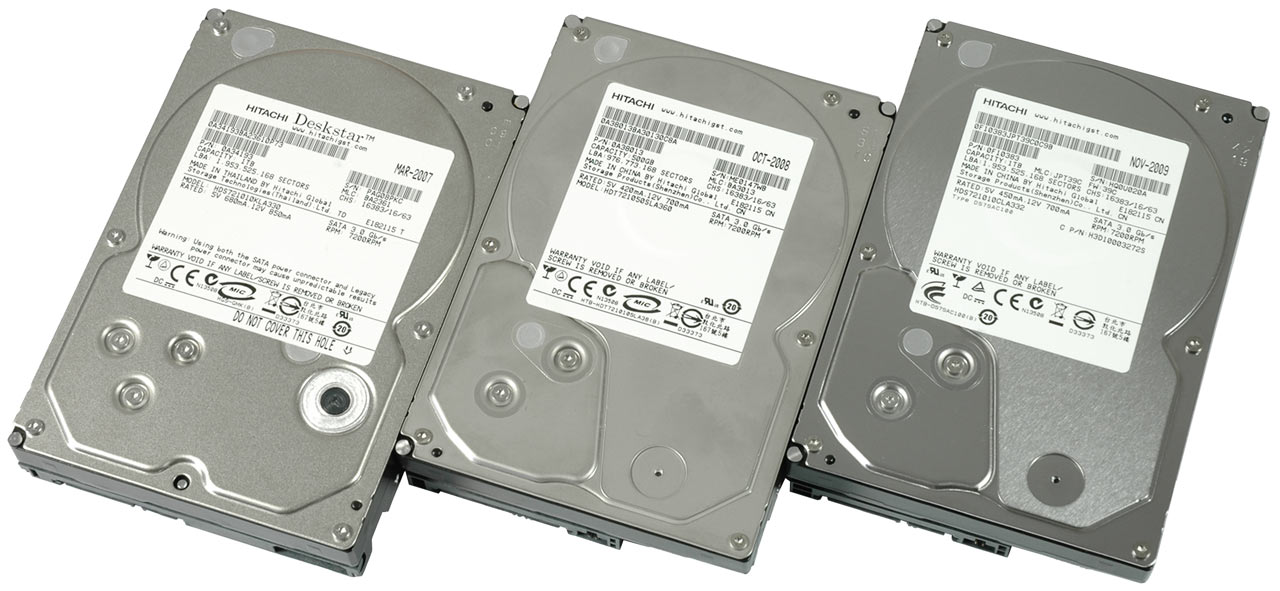Three Generations Compared: Why Storage Density Matters
Less Platters, More Performance, Better Efficiency
Increased data density typically results in better throughput, but it also allows hard drive makers to create drives that require fewer physical components to reach popular capacity points. The effect is more value and lower cost for the end-user. After multiple analyses with Samsung drives in 2009, we grabbed the last three generations of Hitachi Deskstar 7K1000 drives to look at the effects of recent progress. Get ready to see the new Deskstar 7K1000.C do battle with the 7K1000.B and the original 7K1000.
500 GB per Platter
Competing hard drives, such as the Western Digital Caviar Black and Green series, have already been utilizing similar storage densities, cramming 500GB onto a single 3.5” platter. Samsung’s Spinpoint F3 and the Seagate Barracuda XT are other examples. However, these product families cover the full capacity range from 160GB or 250GB entry-level drives up to 2TB capacity points. Hitachi’s naming approach is different from its peers because the "1000" in the 7K1000 family notes a 1TB capacity.
Which is the Better Strategy?
Samsung and WD each offer two product lines that cover all capacity points, but differ in positioning. There are green drives that spin at 5,400 RPM and performance drives at 7,200 RPM. Typically, there's even a third line with drives qualified and validated for 24x7 server applications. Do we really need so many options? Yes and no. Hard drive makers feel it's necessary to address all market segments. Geeks can find their perfect hard drives from the Barracuda, Caviar, Deskstar, Spinpoint, and Black, Green, EG, LP, or XT models. More mainstream consumers are likely to find this all bewildering, which might explain why Seagate has been reducing its variety, offering the Barracuda XT at 2TB and 7200.12 at 1TB only.
While Hitachi has a product line that offers high capacity SATA storage for business environments, it lacks a power-efficient product line at lower RPMs. Instead, the high-capacity drives are based on a massive five-platter design. All mainstream Hitachi drives, however, originate from a different product line that has so far been limited to 1TB. Unbelievably for many enthusiasts, most 3.5” hard drives sold today are still below this capacity point.
Going from the five-platter 7K1000 to the three-platter 7K1000.B introduced a 20% boost in performance while similarly increasing efficiency. Can the two-platter 7K1000.C continue to improve along these lines?
Get Tom's Hardware's best news and in-depth reviews, straight to your inbox.
Current page: Less Platters, More Performance, Better Efficiency
Next Page Deskstar 7K1000 (Five Platters, 2007)